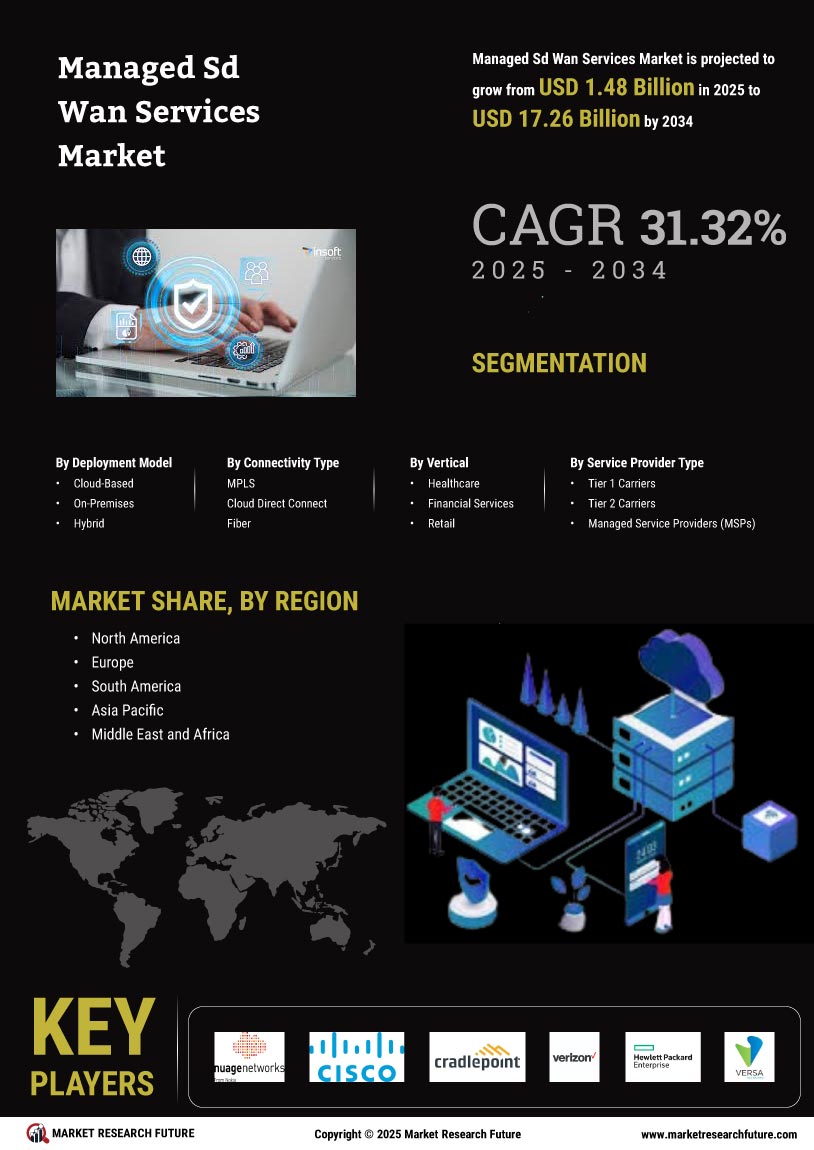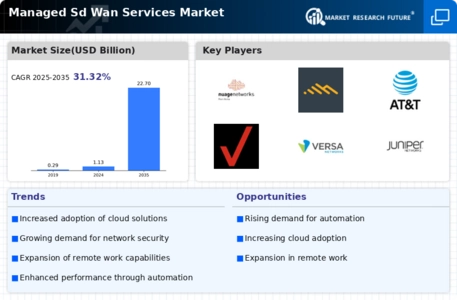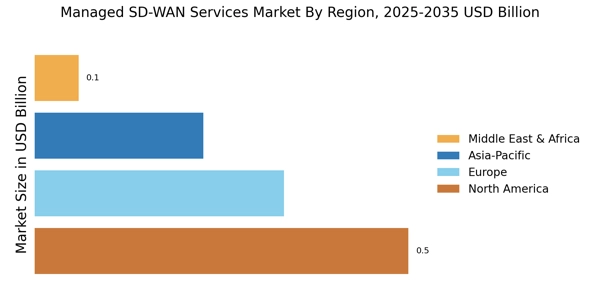Enhanced Security Protocols
Security concerns are paramount in the Managed Sd Wan Services Market, particularly as cyber threats become increasingly sophisticated. Managed SD-WAN services provide advanced security features, such as end-to-end encryption and integrated firewalls, which are essential for protecting sensitive data. The market is witnessing a shift towards solutions that not only optimize network performance but also fortify security measures. Data indicates that organizations utilizing managed SD-WAN services experience a 40% reduction in security incidents, underscoring the importance of robust security in driving market growth. This trend suggests that security enhancements will continue to be a critical factor in the adoption of managed SD-WAN solutions.
Rising Demand for Network Agility
The Managed Sd Wan Services Market is experiencing a notable surge in demand for network agility. Organizations are increasingly seeking solutions that allow for rapid deployment and flexibility in their network infrastructure. This demand is driven by the need for businesses to adapt quickly to changing market conditions and customer requirements. According to recent data, the market for managed SD-WAN services is projected to grow at a compound annual growth rate of approximately 25% over the next five years. This growth indicates a strong preference for solutions that enhance operational efficiency and reduce latency, thereby enabling organizations to respond swiftly to market dynamics.
Support for Multi-Cloud Environments
The Managed Sd Wan Services Market is increasingly influenced by the growing adoption of multi-cloud environments. As organizations leverage multiple cloud services to enhance their operational capabilities, the need for seamless connectivity and management across these platforms becomes essential. Managed SD-WAN services facilitate this integration by providing a unified approach to network management, ensuring optimal performance and reliability. Current estimates indicate that over 60% of enterprises are utilizing multiple cloud services, which drives the demand for SD-WAN solutions that can effectively manage these complex environments. This trend highlights the critical role of managed SD-WAN in supporting modern IT infrastructures.
Cost Efficiency and Operational Savings
Cost efficiency remains a pivotal driver in the Managed Sd Wan Services Market. Enterprises are continually looking for ways to optimize their operational expenditures, and managed SD-WAN services offer a compelling solution. By consolidating multiple network functions into a single platform, organizations can significantly reduce costs associated with hardware, maintenance, and management. Reports suggest that businesses can achieve savings of up to 30% on their networking costs by transitioning to managed SD-WAN solutions. This financial incentive is likely to propel further adoption, as companies recognize the potential for enhanced budgetary control and resource allocation.
Increased Focus on Digital Transformation
Digital transformation initiatives are a significant driver in the Managed Sd Wan Services Market. As businesses strive to modernize their operations and enhance customer experiences, the need for reliable and efficient network solutions becomes paramount. Managed SD-WAN services enable organizations to streamline their digital transformation efforts by providing the necessary bandwidth and connectivity to support new applications and services. Data suggests that companies investing in digital transformation are likely to see a 20% increase in productivity, further emphasizing the role of managed SD-WAN in facilitating these initiatives. This focus on digital transformation is expected to sustain the momentum of the managed SD-WAN market.


















Leave a Comment